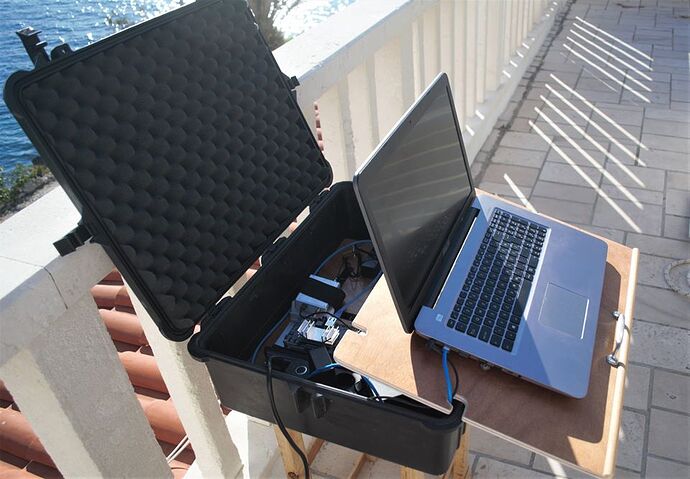So, I finally managed to squeeze enough time to buy and test the LimeNET Micro, something I was eyeing since last summer.
First impressions are very good, it clearly has a lot more features than the LimeSDR-mini, and I was very impressed to see the software stack (LimeSuite) working very well and all the troubles I had with my mini pre-release board now completely gone. Congrats to the Lime developers.
I am using the board in USB mode for now, through SoapySDR (because I’m too lazy to add gr-limesdr sources and sinks to qradiolink at the moment). If and when I start working with a DMR software stack, I’ll probably have to switch to gr-limesdr to make use of the tx_time tags. But Soapy has been flawless so far.
Radio-wise, don’t expect to be able to use the board without band filters. Adding band-pass filters for the desired band makes a huge difference on reception. On the 430 MHz band, where I want to use this board as a standalone mixed mode repeater, the LimeNet Micro was a bit more deaf than the Pluto I also use. It is less prone to interference from Wifi than the Pluto, on the other hand I think I have some faint 3G images in the band.
What I haven’t been able to do was find the ideal RX gain settings for the various stages. Like the mini board, the documentation on the wiki is a bit patchy, finding it necessary sometimes to go dig through the source of LimeSuite to find out things.
It would be very nice to have a reference for good known settings for the gain stages somewhere.
On the other hand, I did not fire up my PGA-103+ LNA yet, and the signal levels are adequate if not stellar. I expect the LNA to improve reception.
Transmission is ok on the 70 cm band, the power level is good but you need to be careful to set TX gain to maximum before activating the TX side of the board, otherwise the MCU complains that it can’t calibrate TX. After the calibration is done (which now is very fast compared to the mini dev board I had), you can programatically reduce TX gain to minimum.
The automatic RX and TX path selection is a huge improvement, I don’t have to worry about setting it as I sweep the frequency across bands.
I noticed quite a bit of LO leakage on duplex TX, but I can’t tell what is the expected level of LO leakage after calibration. It would be helpful to have this information somewhere.
My board did not come with Wifi, or at least it does not have the connector soldered. This is something I fault the distributor for, as they did not specify this in the description. Be careful if you want this feature.
I am eagerly expecting the general availability of LimeRFE, since that is something that my project needs. If it works as well as the LimeNet Micro, then us amateurs experimenting on VHF to SHF frequencies will have a big winner on our hands.
Best regards,
Adrian

